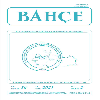SSR MARKÖR SİTEMİ KULLANARAK KAVUNLARDA SAFLIK DÜZEYLERİNİN TAHMİN EDİLMESİ
Kavun çok çeşitli alt türleri içermesi ve ekonomik değerinden dolayı Cucurbitaceae familyası içinde önemli bir sebze türüdür. Türkiye’de kavun üretimi, yerel popülasyonlar, standart ve F₁ çeşitler ile yapılmaktadır. Türkiye’de kavunda genetik çeşitlilik oldukça fazladır. Bunun başlıca nedeni bitkinin çiçek yapısı ve döllenme biyolojisidir. Bu da ıslahçılar için çok önemli avantajlar sağlamaktadır. Ancak bu çeşitlilikten yararlanarak yeni çeşitlerin eldesinde önce bu hat ve/veya popülasyonların saflaştırılması gerekmektedir. Bunun içinde uzun süre isteyen emek yoğun çalışmalar gerekmektedir. Bitkilerde saflık düzeylerin erken ve pratik bir yöntemle belirlenebilmesi ıslahçılara önemli avantajlar sağlayacaktır. Bu bağlamda ilgili moleküler markör kullanımı daha etkin saflık düzeylerinin tanımlanmasında kullanılmaktadır. Bu çalışmada SSR markör yöntemi kullanılarak kavunlarda saflık düzeylerinin tahmin edilmesi amacıyla 300 adet kavun genotipinde gerçekleştirilmiştir. Çalışmada 26 adet SSR markörü test edilmiş en yüksek polimorfizm oranı gösteren 10 SSR markörü kullanılmıştır. Kavun genotipleri arasındaki saflık düzeyleri SSR markör yöntemiyle belirlenmiştir. Değerlendirme sonucunda en yüksek safiyet oranı %80-85, en düşük safiyet oranı %55-60 olarak bulunmuştur.
ESTIMATION OF HOMOGENEITY LEVELS IN MELONS USING SSR MARKER SYSTEM
Melon is an important vegetable species in the Cucurbitaceae family due to its economic value and a wide variety of sub-species. Melon production in Turkey, local populations, and F₁ are made with standard cultivars. In Turkey, there is a lot of genetic diversity in melons. The main reason for this is the plant’s flower structure and fertilization biology. This provides very important advantages for breeding. However, by taking advantage of this diversity, this line and/or populations need to be homogenized first in order to obtain new cultivars. This requires long-term labor-intensive work. Determination of homogeneity levels in plants by an early and practical method will provide important advantages to the breeding. In this context, the use of related molecular markers is used to define more effective purity levels. In this study, 300 melon genotypes were performed to estimate purity levels in melons using the SSR marker method. In the study, 26 SSR markers were used, with 10 SSR markers showing the highest polymorphism rate tested. Purity levels between melon genotypes were determined by SSR marker method. As a result of the evaluation, the highest purity rate was 80-85% and the lowest purity rate was 55-60%.
___
- 1. Aslan, N., 2019. Moleküler markörleri kullanarak çerezlik kabaklarda (Cucurbita pepo L.) saflık düzeylerinin tahmin edilmesi. Erciyes Üniversitesi Fen Bilimleri Enstitüsü Bahçe Bitkileri Anabilim Dalı, Kayseri.
- 2. Can, H., Kal, Ü., Özyigit, İ.İ., Paksoy, M., Türkmen, Ö., 2019. Construction, characteristics and high throughput molecular screening methodologies in some special breeding populations: a horticultural perspective. Journal of Genetics. 86-98.
- 3. Chengxiang, A., Lu, L., Guobin, M., Zhixin, L., 2005. Application of SSR markers in hybrid seed purity test of melon. Acta Horticulturae 32(5):902.
- 4. Erdoğan, F., 2016. Göller bölgesinde yerel kavun genotiplerin toplanması ve morfolojik karakterizasyonu. Selçuk Üniversitesi Fen Bilimleri Enstitüsü Bahçe Bitkileri Anabilim Dalı, Konya, 137s.
- 5. Ju-Fen, L., Guo-Bin, M., Ling, X., 2008. SSR markers for identification of purity of melon hybrids. Chinese Journal of Agricultural Biotechnology 5(3):223-229.
- 6. Kayak, N., 2017. Çerezlik kabak genotiplerinde morfolojik ve moleküler (SSR) yöntemlerle karekterizasyon ve heterotik etkilerin belirlenmesi. Selçuk Üniversitesi Fen Bilimleri Enstitüsü Bahçe Bitkileri Anabilim Dalı, Konya.
- 7. Li, O.J., Chen, X.M., Xia, P.X., Pei, Z.Y., Wang, Y., Lan, Q.K., Zhang, R.W., 2015. EST-SSR marker-based assay for purity identification of melon “Green Angle”. In: Advances in Applied Biotechnology. Eds: Springer, pp:637-642.
- 8. Paris, H.S., 2005. The genes of pumpkin and squash. Hortscience 40:1620-1630.
- 9. Pitrat, M., Hanelt, P., Hammer, K., 2000. Some comments on infraspecific classification of cultivars of melon. 7. Eucarpia Meeting on Cucurbit Genetics and Breeding 510:29-36.
- 10. Qiagen, G., 2000. DNeasy plant mini kit and DNeasy plant maxi kit handbook. Qiagen GmbH.
- 11. Robinson, R.W., Decker-Walters, D.S., 1997. Cucurbits in: Crop Production Science in Horticultures Series 0-85199-133-5, 226p.
- 12. Türkmen, Ö., Șensoy, S., Erdinç, Ç., Paksoy, M., 2012. Determination of genetic diversity among Çumra melon genotypes by ISSR markers. Proceedings of the 10. Eucarpia Meeting on Genetics and Breeding of Cucurbitacea, Antalya/Turkey, 15-18.10.2012, pp:520-527.
- ISSN: 1300-8943
- Yayın Aralığı: Yılda 2 Sayı
- Başlangıç: 1968
- Yayıncı: Atatürk Bahçe Kültürleri Merkez Araştırma Enstitüsü
Sayıdaki Diğer Makaleler
ISPANAK ISLAHI VE ISPANAK ISLAHINDA YENİ YAKLAŞIMLAR
ALIÇ (Crataegus azarolus L.) TOHUMLARININ ÇIKIŞ ORANLARI ÜZERİNE BAZI UYGULAMALARIN ETKİLERİ
Oğuzhan ÇALIŞKAN, Derya KILIÇ, Kazım MAVİ, Safder BAYAZIT
SEBEN (BOLU) YÖRESİ ARMUT GENOTİPLERİNİN POMOLOJİK VE MORFOLOJİK KARAKTERİZASYONU
CEVİZ KÖK ÇELİKLERİNDE ÇELİK ÇAPI, ÇELİK BOYU VE AŞI BAŞARISI ARASINDAKİ İLİŞKİLER
Turan KARADENİZ, Yakup Kadir KÖMÜR
Betül GIDIK, Abdurrahman SEFALI, Murat ÜNAL
DİYARBAKIR YÖRESİ CEVİZ (Junglans regia L.) GEN KAYNAKLARI
Koray ÖZRENK, Bahar YILMAZ, Ferit ÇELİK
KAOLİN UYGULAMASININ BAZI CEVİZ ÇEŞİTLERİNDE ANTRAKNOZ VE İÇ KURDU OLUŞUMUNA ETKİSİ
